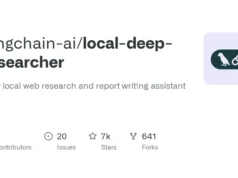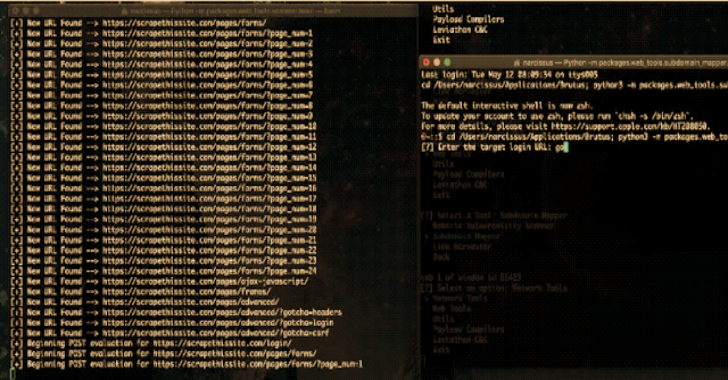Web apps are the cat’s meow nowadays — every business, big or small, has one. Every company uses them, Whether their digital alchemical creation or someone else’s. They are critical corporate tools that help organizations maximize their potential in various industries. In various markets. In different stages of their day-to-day operations. Keeping them secure is paramount — it is an infrastructural, do-or-die need. By adopting Dynamic Application Security Testing – DAST -, businesses can ensure that risks and challenges in their application security can effectively be solved.
The role of security in application development
Application development must instigate security measures from the get-go into its DNA because it helps safeguard user data from dangerous assaults, protects IPs, and guarantees that apps operate at their peak efficiency. Why? Because, at their core, hackers, digital hooligans, and the like are a crafty bunch. They’ll exploit the slightest hiccup in your code and take advantage of it. And an attack, according to IBM, has an average cost of over $4 million — the cost factors in downtime, fines, legal hurdles, and the actual price tag of fixing and patching the error.
A vogue and often-used security strategy is dynamic application security testing – DAST. DAST can assist in finding potential security flaws in an application and offer solutions to fix them.
Dynamic Application Security Testing is a vital tool in developing contemporary applications due to its effectiveness in identifying and resolving security threats and application security-related issues. It analyzes an application to find flaws and vulnerabilities by mimicking actual attacks. Like a hacker, it looks at the application from the outside – with criminal intent – to uncover and exploit potential entry holes. Once the app has been analyzed, DAST offers insightful information on possible security gaps that bad actors could use.
DAST also assists businesses in adhering to industry standards and international and regional laws regarding software security. It shows them they are committed to securing private user information and protecting sensitive data.
The risks and challenges in application security
The security of an application has to be the number one priority in today’s fast-changing digital environment, where cyber threats are growing more sophisticated. The risks and difficulties in guaranteeing security grow more noticeable as technology develops and more enterprises depend on software programs to function.
DAST’s capability to recognize known and unidentified vulnerabilities is one of its main benefits. In addition to looking for typical security weaknesses, it investigates every potential attack route. This all-encompassing strategy guarantees that no detail is overlooked when protecting your applications.
Continuous testing is possible throughout the software development life cycle because Dynamic Application Security Testing is easily integrated into the development workflow. Developers can proactively resolve potential vulnerabilities before they become significant problems by implementing security testing early.
The following are some challenges and risks related to application development’s security:
Code Vulnerabilities
Code vulnerabilities are weak points or faults that hostile actors can use to modify data, obtain unauthorized access, or stop a program from working correctly. These flaws are caused by faulty programming, bad coding techniques, inadequate input validation, or improper security control implementation.
They can lead to detrimental effects that include monetary losses, legal troubles, invasions of user privacy, and brand harm.
Developers must take proactive measures to reduce these risks, including thorough code reviews and safe coding techniques from the beginning.
Third-Party Components
To increase functionality or shorten development time, developers must include third-party elements in their systems, such as libraries or pre-built programs. However, they can sometimes inject flaws into a program that villains and knaves can exploit to gain unauthorized access, jeopardize data integrity, or carry out other cyberattacks.
Relying significantly on third-party components might also make a program dependent on other outside components for essential features. Future unavailability or lack of support for these components could cause compatibility problems and impede current development efforts.
Runtime Problems
Memory leaks, buffer overflows, race conditions, and code injection vulnerabilities are some of the runtime issues that can appear during the completion of an application.
The increasing complexity of modern applications makes it even more challenging to identify and mitigate runtime problems effectively. Therefore, developers must use appropriate coding during the development process so runtime problems can be identified and corrected.
Failure to adequately address runtime problems can have severe consequences for both businesses and end-users. To short-tail these risks, developers must implement secure coding practices, regularly update software dependencies, conduct thorough testing, and continuously monitor applications.
Security Misconfigurations
These misconfigurations occur when developers unintentionally leave applications vulnerable due to improper configuration settings. Implementing secure coding practices, regularly updating software libraries and frameworks, conducting thorough vulnerability assessments, and following industry best practices are essential to mitigating misconfigurations.
Insecure Direct Object References – IDOR
IDOR occurs when an application’s access controls are not correctly implemented, allowing unauthorized users to manipulate or access sensitive data directly.
By implementing proper access controls, developers can ensure that only authorized users access specific resources or objects within an application.
Moreover, thorough testing and validation procedures should be conducted to identify any potential vulnerabilities related to IDOR. This includes verifying that user permissions are correctly enforced across all application layers and preventing manipulation of direct object references.
Injection Attacks
Injection attacks occur when an attacker exploits vulnerabilities in an application’s input validation mechanisms to inject malicious code or commands. This can lead to unauthorized access, data breaches, and compromise.
Some injection attack methods developers must know are cross-site scripting, SQL, and command injection. If these attacks are not handled, theft or manipulation of sensitive data or unauthorized access to privileged information can be severe.
Developers should implement secure coding practices and utilize proper input validation techniques to mitigate these risks. This includes sanitizing user inputs, using parameterized queries or prepared statements for database interactions, and employing web application firewalls – WAFs – to detect and block malicious requests.
Insufficient Logging and Monitoring
When logging is not implemented correctly, detecting and investigating security incidents and identifying the source of an attack becomes challenging. This lack of visibility can lead to delayed incident response and increased damage to the organization’s systems and data.
Similarly, inadequate monitoring can leave applications vulnerable to ongoing attacks. Organizations may not be alerted to suspicious activities or unauthorized access attempts without real-time monitoring.
Insufficient logging and monitoring can have legal and regulatory implications for businesses operating in highly regulated industries.
Organizations must prioritize comprehensive logging practices that capture relevant information such as user activity, system events, error messages, and network traffic.
Dynamic Application Security Testing – DAST – and your digital fiefdom
Open up your phone, computer, and tablet, and mark down how many apps you need to stay functional — and how many of them you’re using for your business. Some you have developed yourself, others have downloaded off the net, and you rely on their teams to keep you safe. Some of them you have incorporated – through APIs or open-source coding – into the fabric of your organization and its digital environment. How certain are you that they have been field tested? That none is a poisoned pill?
You are at the mercy of many things regarding application development and implementation — from human to intentional errors. From giving access to someone without any idea what button they are pushing. From simply forgetting to update a critical outside security feature. From disregarding a potential red-fag that someone along your development pipeline warned you strongly about. These errors can have catastrophic consequences on your business — just a few thousand. They are complex, they are sometimes invisible, and they are everywhere.


























.webp)
